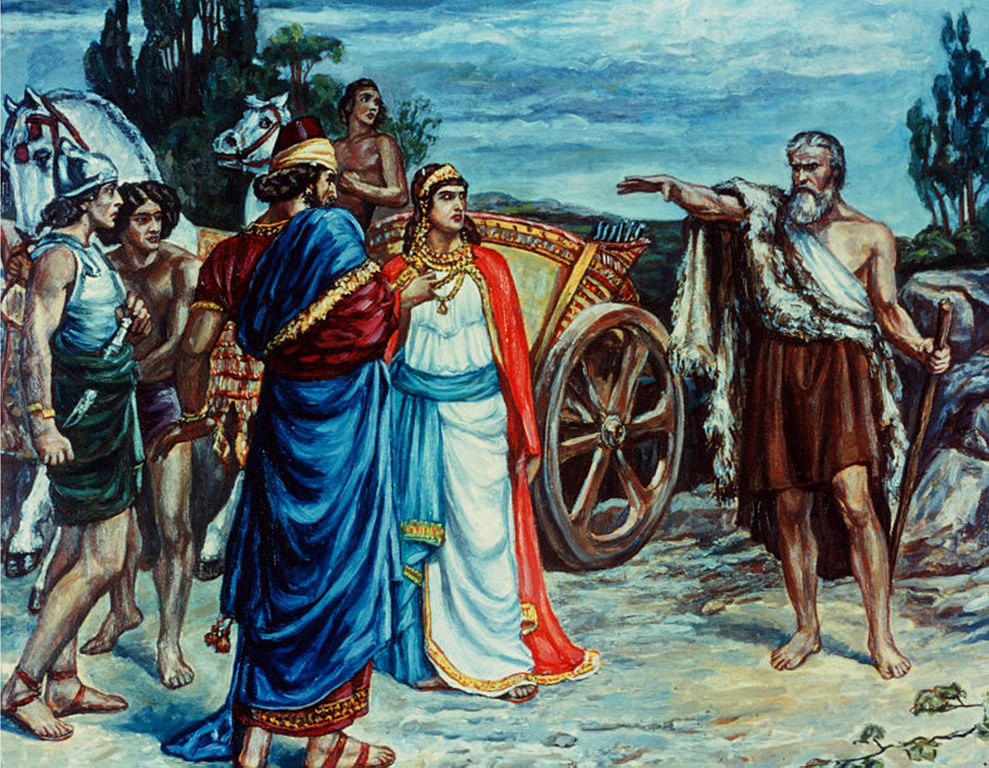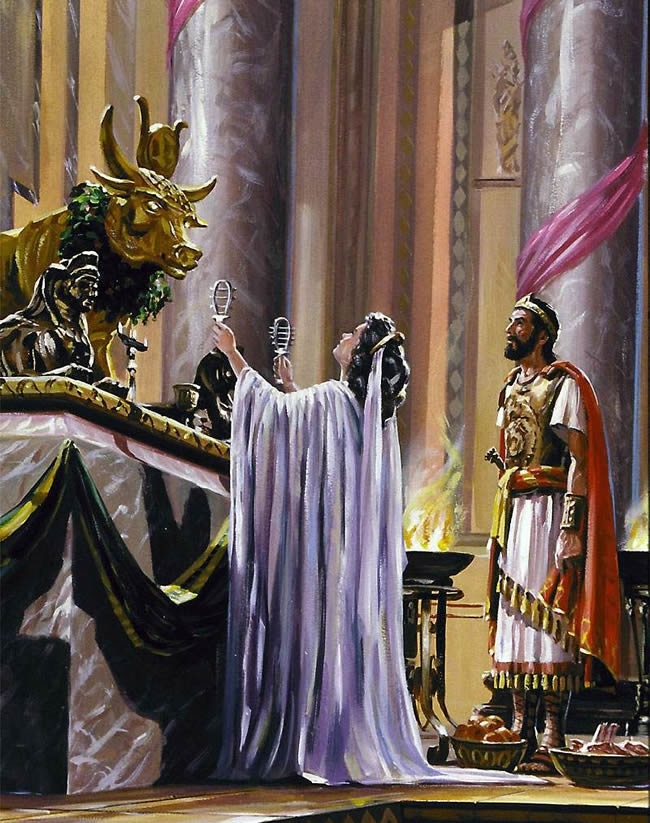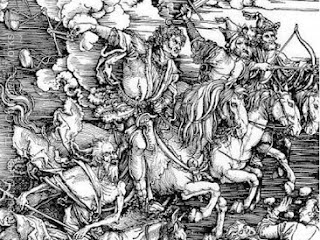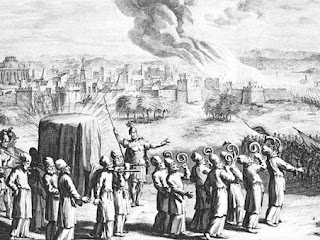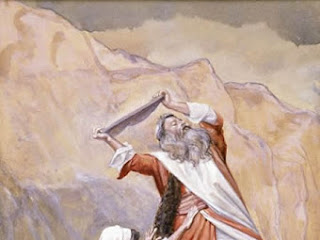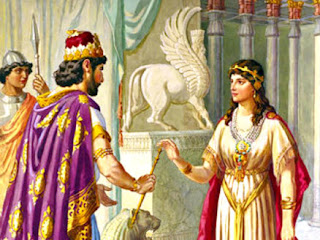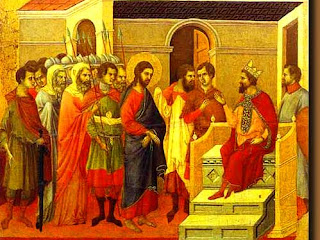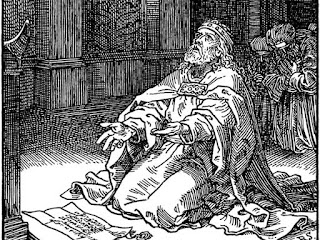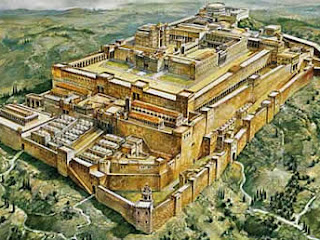From the beginning the Jewish scriptures focus on the Patriarchs Abraham, Isaac (Ishmael), Jacob, and Joseph. The reason for this attention is that from them came the "covenant", the divine choice that favors the people of the Bible. Abraham was promised the land of Canaan (present-day Israel).
His grandson was named Jacob but after a divine encounter was renamed "Israel". From this patriarch came 12 sons, which became the line of the tribes that dominate the rest of the Bible. Corporately the tribes are known as Israel, named after their forefather.
Saul, David, and SolomonThe time of the Patriarchs likely occurred in the Late Bronze and Early Iron Ages. The earliest mention of Israel comes from the Merneptah Stela of c. 1200 b.c.e. in Egypt. The stela simply states: "Israel has perished; its seed is no more". As for the tribes’ existence and the traditions surrounding them, the historical record is totally silent.
Their way of life as described in the Bible is consistent with what can be hypothesized from the scanty archaeological record. These tribes first are migratory and go down to Egypt during a time of famine. From there Moses leads them back to the brink of the land where Abraham had lived.
Once they enter the land, it is clear that they lack political cohesion and stability, for charismatic heroes known as
Judges are required to take charge periodically and give military deliverance to the tribes. Finally, the tribes unite to select several kings, at first
Saul and then David and his son Solomon.
The separate identity of Israel and Judah probably began to take shape in the time of the Judges. Israel referred to the land of Ephraim of the northern hill country, where the other tribes deferred to Ephraim as the largest and most powerful. This confederation of the northern tribes then came together to choose the first king, Saul, and the few southern tribes probably gave limited support.
When Saul died, the southern tribes rallied around David, a representative from the southern confederation from the tribe of Judah. David then sought to bring the northern tribes into the alliance by choosing as his capital city, Jerusalem, "the City of David", outside the north or south, a foreign stronghold.
In spite of this, resentments were still rampant in the north, and regional rebellions broke out. When Solomon died, even the Bible could not repress a negative view of the heavy taxes that were imposed on the north to pay for David and Solomon’s public works.
Jeroboam, Rehoboam, and AhabThe net effect of this tension was that the northern 10 tribes seceded from the southern two tribes as soon as Solomon died. Jeroboam, who had earlier led an unsuccessful insurrection against Solomon, led them. Meanwhile, crown prince Rehoboam led the south and is portrayed as a stubborn and haughty king.
The split, however, left both sides vulnerable to popular discontent and external threats. Whatever prestige they had from the "empire" of David and Solomon was lost when they often clashed with each other on the battlefield.
Israel, though bigger, was weak until the time of Omri, who was succeeded by his capable son and daughter-in-law, Ahab and Jezebel. They established their capital city of Samaria, and the country boomed under their leadership. The archaeological records tend to confirm this judgment.
Judah continued to decline, although the interpretation of the Jewish scriptures is that it was more legitimate because it was the home of David and the location of the Temple and Jerusalem. Meanwhile, prophetic criticism mounted against Israel because of its idolatrous worship, its persecution of true religion, and its wealth disparities.
Three recently discovered stela (Mesha Stela in Moab, Tel Dan Stela, and Shalmaneser III Stela) all confirm the involvement of Israel with foreign powers, including Moab, Damascus, and Assyria during the reign of Ahab.
Ahab and Jezebel also had to contend with external opposition, and eventually they succumbed to the Assyrians. Their ruler Tiglath-pileser III (744–727 b.c.e.) was especially interested in the wealth of Israel, and the alliance Israel had made with the Aramaeans proved feeble in the face of the invaders.
The cruel Assyrians not only took all the people of the north into captivity, but they erased their culture from history. Thereafter, the northerners were never heard from again and came to be called "the lost tribes of Israel". A small remnant today claims to be offspring of the northern Israelites, the Samaritans, who live near Nablus on the Palestinian West Bank.
Unified Israel and JudahJudah meanwhile was rarely mentioned in the early books of the Bible but came into its own with its dashing king David and enigmatic successor Solomon. When Jereboam rebelled against Rehoboam, the land of Judah was all that Rehoboam had left of his father’s expanse. Such a small area at first came to be dominated by
Egypt.
After 40 years of bloody clashes with Israel, finally a truce brought the two fraternal kingdoms together. Royal intermarriages even brought them into an alliance. According to the Jewish scriptures, Israel also brought its corruptions to Judah, as well as its hapless allies, the Aramaeans.
The reunion of Israel and Judah definitely was too little and too late to do anything about the invading Assyrian forces that swallowed up the north and nearly did the same in the south. At first the Assyrians simply turned Judah into a client state. Then their general Sennacherib challenged King Hezekiah to surrender.
The Bible reports that a divine intervention turned back the invaders before they could overrun the walls of Jerusalem. None of this can be substantiated, though it is true that Judah was the only relatively independent state to escape Assyrian hands in the eighth century b.c.e.
Foreign Rule of Babylonians and RomeJosiah (c. 648–609 b.c.e.) then tried to expand Judah’s sphere of influence, but the Egyptian pharaoh came to Assyria’s help and killed him. With Josiah’s death the vision of restoring the throne and territory of David and Solomon also came to an end.
Even though the Assyrians were finally put down at the Battle of Carchemish (605 b.c.e.), a new conqueror,
Nebuchadnezzar II of Babylon, now completed what Sennacherib failed to do. He marched on Jerusalem and deported its citizens in 597 b.c.e. and then in 587 b.c.e. sacked the city.
Judah languished in Babylon for several generations. Even when many returned around 525 b.c.e., they did not have political sovereignty again until the time of the Maccabees. This family claimed to be heirs of the Judaean kingdom and successfully rebelled against the Hellenized Seleucids around 164 b.c.e.
They were able to maintain independence until
Pompey established Roman dominance 100 years later. When the insurrectionist Bar Kokhba tried to expel the Romans in 132 c.e., he seems to have laid claim to the same vision of Judah.
The prophets of the Bible all along had prophesied that the "lost tribes" would one day return. Theologically, many later groups laid claim to a spiritualized Israel as a religious concept, latching on to the prophetic vision.
Groups as diverse as the Qumran community, the apocalyptic Jews of the Pseudepigrapha and the Apocrypha, early Christianity, and the early Judaism of the rabbis all took stock in the idea of Israel, meaning the unity of the northern and southern kingdoms.
